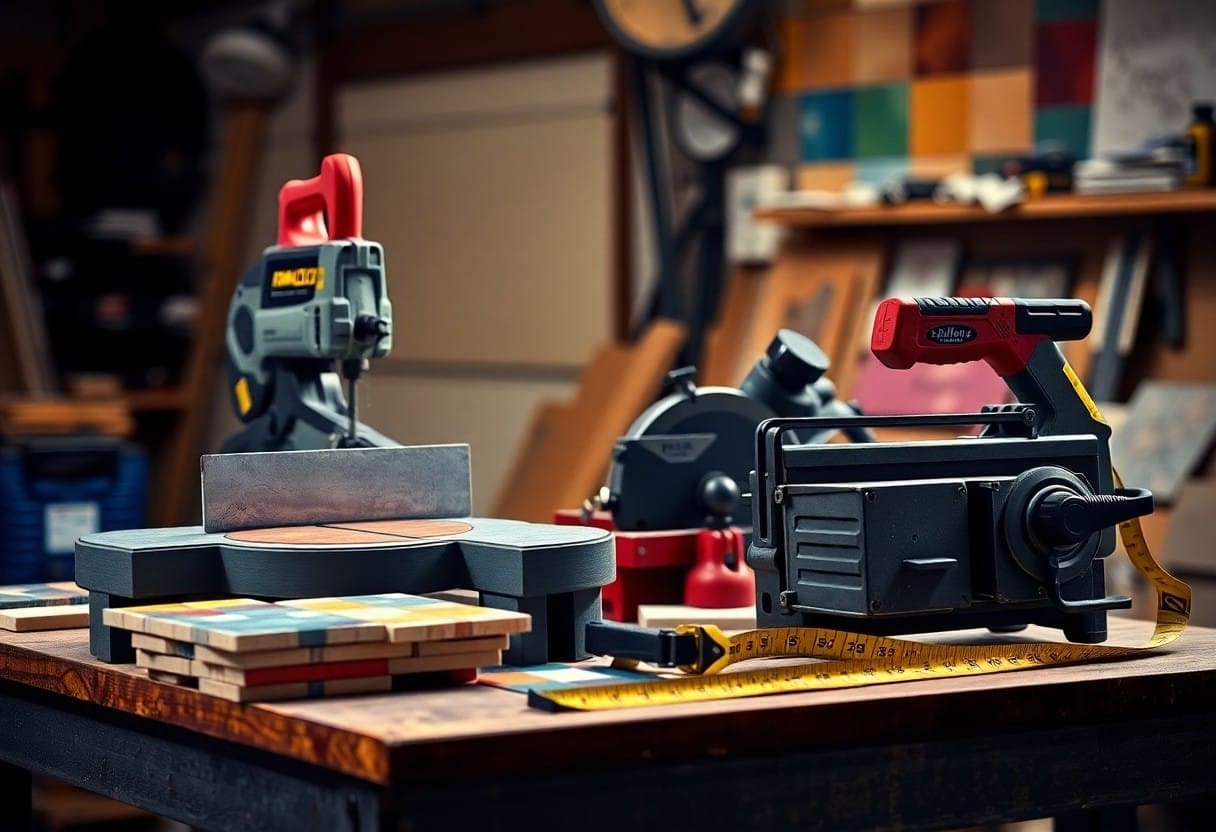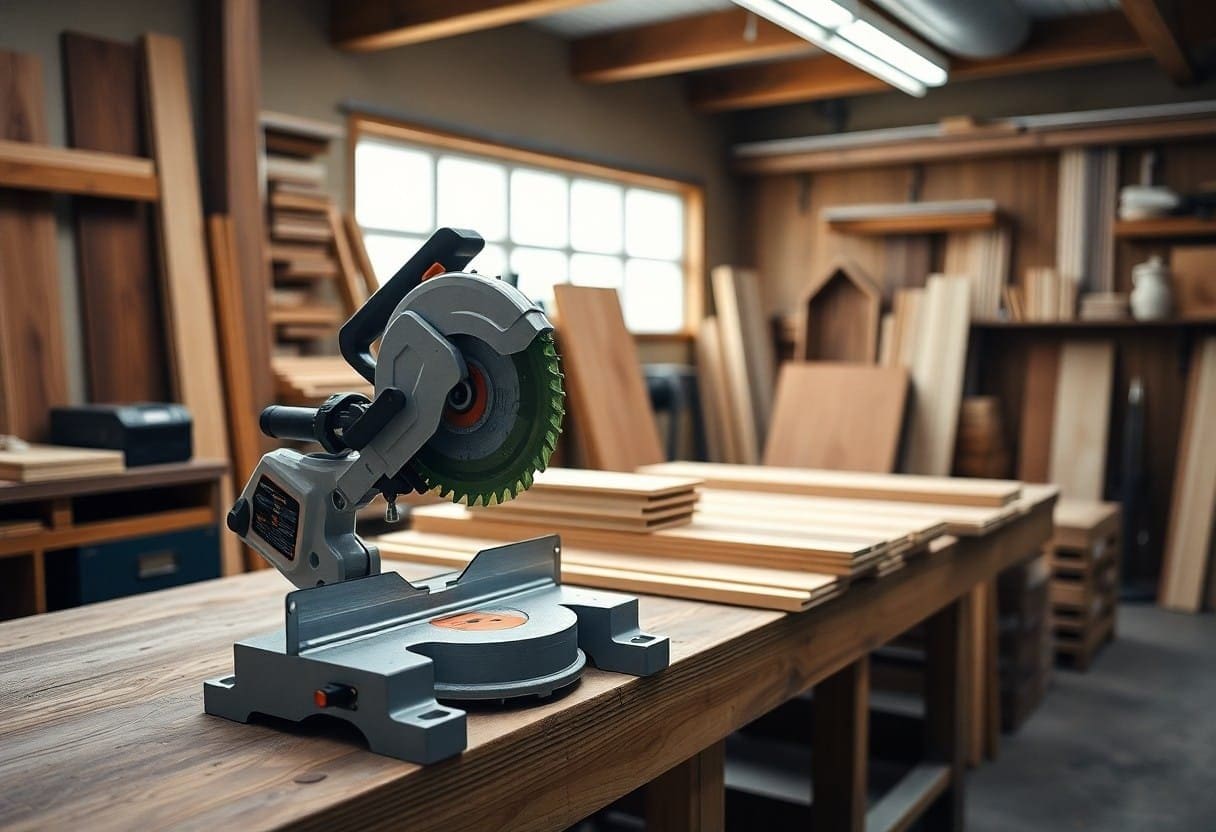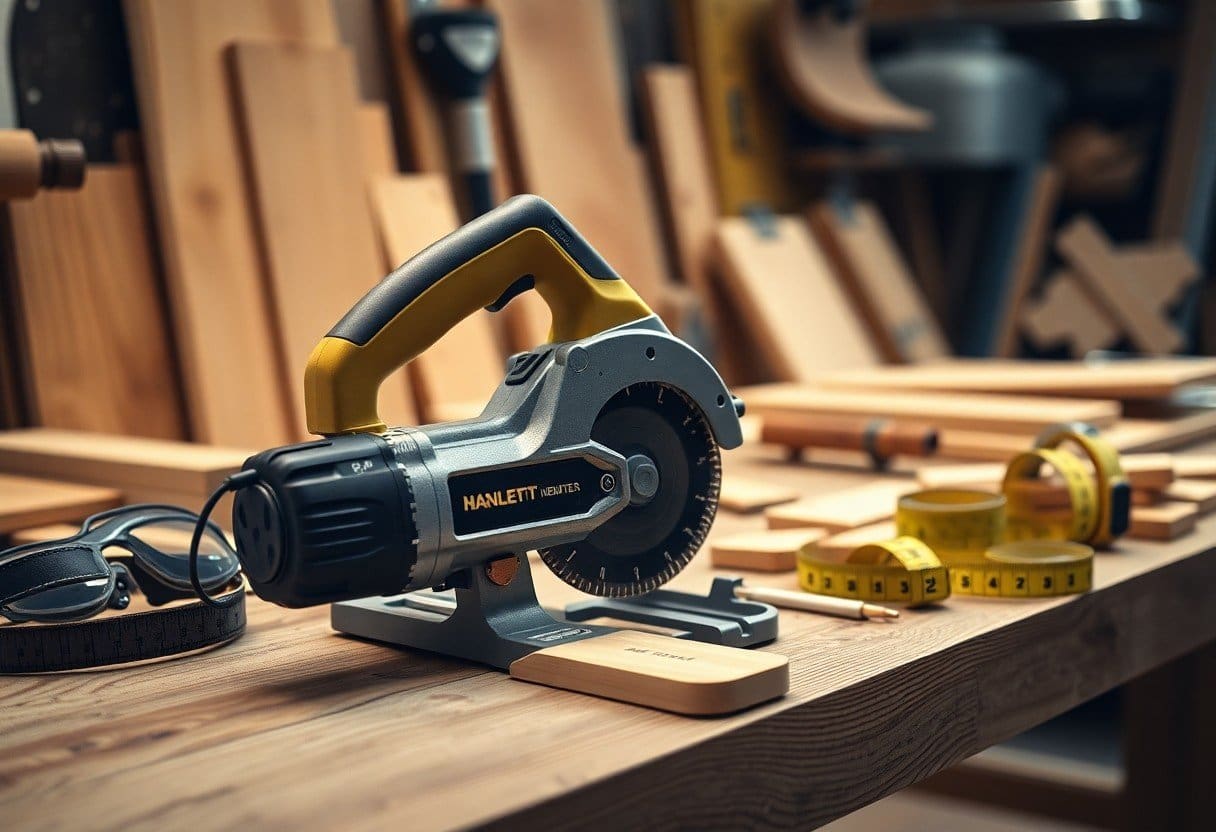Your toolbox is your trusty companion in all DIY projects, and having the right saws is crucial for achieving smooth and precise cuts. Whether you’re a seasoned woodworking enthusiast or just starting out, knowing which saws to have on hand can make a world of difference in the quality of your work. Let’s examine into the top 10 necessary saw types every DIYer needs to have in their toolbox.
Hand Saw
Versatile cutting tool
Versatile and easy to use, a hand saw is a must-have tool for any DIYer. Whether you need to trim branches in the backyard or make precise cuts on a piece of wood, a hand saw can get the job done quickly and efficiently. It is a versatile cutting tool that can handle a variety of materials, making it a valuable addition to your toolbox.
Essential for woodworking
You’ll find that a hand saw is necessary for woodworking projects of all kinds. From cutting through lumber for a new bookshelf to shaping intricate designs, the hand saw is a reliable tool that can help you achieve professional results. Its design allows for more precise cutting compared to power tools, giving you more control over your projects.
Cutting with a hand saw may require a bit more effort than using a power saw, but the results are often worth it. The hand saw gives you the ability to make detailed cuts and adjustments that can be challenging with other cutting tools. With a hand saw in your toolbox, you’ll have the versatility and precision you need for all your woodworking projects.
Table Saw
There’s no doubt that a table saw is a must-have tool for any serious DIYer. This powerful saw is perfect for making a variety of cuts, from ripping lumber to crosscutting plywood. With its large, flat table surface and adjustable blade height, the table saw allows you to make precise cuts with ease.
Precise rip cuts made
Any DIY project that requires straight and precise rip cuts will benefit from using a table saw. Whether you are cutting hardwood flooring or building custom furniture, the table saw’s rip fence ensures that your cuts are accurate and uniform. With a table saw in your toolbox, you can tackle a wide range of projects with confidence.
Ideal for large projects
You’ll find that the table saw is indispensable when working on larger projects that require cutting long pieces of material. The large table surface provides ample support for handling large sheets of plywood or long boards, making it easier to achieve smooth and accurate cuts. With the power and precision of a table saw, you can handle even the most challenging cutting tasks with ease.
Circular Saw
Powerful cross-cutting ability
For powerful and precise cross-cutting, you need a circular saw in your toolbox. This versatile tool is important for making quick and accurate cuts across various materials, such as wood, plastic, and metal. Whether you are working on a DIY project at home or a construction job on-site, a circular saw will make your cuts clean and efficient.
Fast and efficient cutting
Efficient and speedy cutting is made possible with a circular saw in your hand. The circular motion of the blade allows you to make quick and straight cuts with ease. With the right blade, you can cut through different thicknesses of materials effortlessly, saving you time and effort on your projects.
The circular saw’s ability to make smooth and straight cuts quickly makes it a must-have tool for any DIYer. Whether you are cutting plywood for a home renovation project or trimming lumber for a custom furniture piece, a circular saw will help you get the job done with precision and efficiency.
Reciprocating Saw
Despite being one of the more intimidating power tools, the reciprocating saw is a must-have in your DIY toolkit. Its powerful, back-and-forth blade motion makes it perfect for a wide range of cutting tasks. Whether you are a seasoned DIYer or just starting out, a reciprocating saw will quickly become one of your go-to tools.
Demolition and pruning tasks
Even if you’re not planning a major renovation, a reciprocating saw is invaluable for smaller demolition jobs around the house. From cutting through drywall to removing old fixtures, this tool makes quick work of tough materials. Additionally, the reciprocating saw is perfect for outdoor tasks like pruning tree branches. Its powerful blade can easily slice through thick branches, saving you time and effort compared to manual tools.
Versatile and convenient tool
Little compares to the versatility and convenience of a reciprocating saw. With the right blade, you can cut through wood, metal, plastic, and even pipes with ease. The compact size of the saw also allows you to reach tight spaces that other saws can’t access. Whether you’re working on a home renovation project or just need to make a quick fix, the reciprocating saw is a reliable tool to have in your arsenal.
Any DIYer, regardless of skill level, can benefit from adding a reciprocating saw to their toolbox. This versatile tool will save you time and effort on a variety of cutting tasks, making your projects easier and more efficient. Invest in a high-quality reciprocating saw, and you’ll wonder how you ever managed without it.
Jigsaw
Curved cuts with ease
To make curved cuts, the jigsaw is your go-to power tool. Unlike a circular saw or table saw, the jigsaw can maneuver easily through tight curves and intricate shapes. Its narrow blade moves up and down rapidly, allowing you to cut along curved lines with precision. This makes the jigsaw perfect for projects like cutting out a hole for a sink in a countertop or creating rounded edges on a piece of wood.
Perfect for intricate designs
To add intricate designs to your woodworking projects, the jigsaw is an imperative tool to have in your toolbox. With a jigsaw, you can easily cut out patterns and shapes in various materials, such as wood, plastic, or metal. Whether you’re creating custom furniture, personalized signs, or unique home decor, the jigsaw allows you to unleash your creativity and bring your ideas to life.
Some jigsaw models come with adjustable speed settings, allowing you to control the cutting speed based on the material you’re working with. This feature is especially useful when cutting delicate materials that require a slower cutting speed to prevent damage or splintering. Additionally, many jigsaws come with orbital action settings, which provide more aggressive cutting power for faster cuts through thicker materials.
Miter Saw
Many DIYers find the miter saw to be an crucial tool in their collection. This powerful saw allows you to make accurate angled cuts with precision and ease, making it ideal for a variety of projects around the home.
Accurate angled cuts made
On top of being able to make straight cuts, the miter saw is especially useful when it comes to cutting angles. Whether you are working on crown molding, baseboards, or framing, this tool will ensure that you achieve the perfect angle every time.
Ideal for picture framing
For picture framing projects, the miter saw is your go-to tool. Its ability to make precise miter cuts at various angles allows you to create professional-looking frames that will showcase your artwork beautifully. Additionally, the miter saw can easily adjust to different angles, giving you the flexibility to create unique and custom frames for all your pictures.
Accurate and versatile, the miter saw is a must-have for any DIYer looking to take their woodworking skills to the next level. With this tool in your arsenal, you can tackle a wide range of projects with confidence and precision.
Band Saw
Curved cuts in metal
Not all saws are created equal, but the band saw shines when it comes to cutting curved shapes in metal. While other saws may struggle with intricate designs or curves, the band saw excels at making precise cuts with ease. Its unique design allows for the blade to move in a continuous loop, giving you the freedom to create complex shapes and patterns in metal with accuracy and efficiency.
Versatile and precise cutting
Band saws are known for their versatility and precision when it comes to cutting a wide range of materials, from wood to metal. Band saws are a must-have tool in your workshop because they excel at cutting straight lines, curves, and even intricate designs with ease. Band saws come in both horizontal and vertical models, giving you the flexibility to tackle different tasks and projects with precision and accuracy.
Band saws are designed to make smooth and precise cuts, making them ideal for detailed woodworking projects or metal fabrication work. With the right blade and setup, you can achieve clean and accurate cuts every time, making the band saw a valuable tool for any DIYer looking to up their cutting game.
Coping Saw
Intricate curved cuts made
On intricate projects that require curved cuts, a coping saw is crucial in your toolbox. This versatile hand tool is designed with a thin blade stretched across a C-shaped frame, allowing you to navigate tight corners and intricate patterns with ease. Whether you are working on trim carpentry, furniture repair, or DIY crafts, the coping saw is your go-to for precision cutting.
Ideal for woodworking details
With respect to woodworking details, the coping saw is a game-changer. With its ability to make precision cuts and navigate intricate designs, this tool is perfect for creating intricate scrollwork, delicate fretwork, and other detailed woodworking projects. The coping saw gives you full control over your cuts, allowing you to achieve professional-looking results every time.
A coping saw is also ideal for making internal cutouts in your woodworking projects. The thin blade of the coping saw easily fits into tight spaces, making it perfect for intricate designs and detailed work. Whether you are cutting curves, angles, or complex shapes, the coping saw is a must-have tool for any woodworking enthusiast.
Hacksaw
Cutting metal pipes easily
Now, when it comes to cutting metal pipes easily, the hacksaw is your go-to tool. Its fine-toothed blade allows you to make precise cuts through metal with ease. Simply secure the pipe in place and use the hacksaw to cut through it with smooth, controlled movements. Whether you’re working on a plumbing project or just need to trim a metal pipe to size, the hacksaw is a must-have tool in your arsenal.
Essential for plumbing tasks
Any DIYer knows that the hacksaw is necessary for plumbing tasks. From cutting through metal pipes to trimming plastic tubing, this versatile tool allows you to make accurate cuts without any hassle. Whether you’re repairing a leaky pipe or installing new plumbing fixtures, the hacksaw will be your reliable companion throughout the project.
Plumbing tasks often require precise cutting of pipes to ensure a proper fit and seal. The hacksaw’s ability to deliver clean, accurate cuts makes it an indispensable tool for any plumbing project. With the right technique and a quality hacksaw blade, you can tackle a variety of plumbing tasks with confidence and precision.
Tile Saw
Precise cuts in tile
One necessary saw type that should be in your DIY toolbox is the tile saw. With respect to working with ceramic or stone tiles, a standard saw just won’t cut it (pun intended). With a tile saw, you can make precise cuts in tile without causing any damage or cracks, ensuring a professional finish to your tiling project.
Ideal for bathroom renovations
Any DIYer who has tackled a bathroom renovation knows that cutting tile to fit around fixtures and corners can be a daunting task. This is where a tile saw comes in handy. Whether you are installing a new backsplash, retiling your shower, or updating your bathroom floor, a tile saw will help you achieve the perfect fit for your tiles.
Cuts made with a tile saw are clean and precise, allowing you to create seamless transitions between tiles and achieve a professional-looking result. By investing in a tile saw, you can save time and frustration during your bathroom renovation projects, making the entire process smoother and more efficient.
Conclusion
Summing up, having a variety of saws in your toolbox is crucial for any DIYer. Each type of saw serves a specific purpose, whether it’s cutting through wood, metal, or other materials. By having the right saw on hand, you can ensure your projects are done efficiently and accurately.
Remember to consider the material you will be cutting and the type of cut you need to make when selecting the appropriate saw. With these 10 crucial saw types at your disposal, you’ll be well-equipped to tackle a wide range of DIY projects with confidence and precision.




